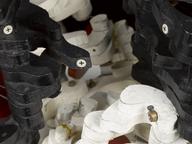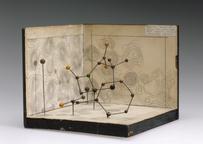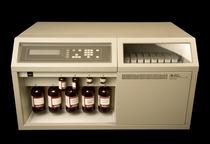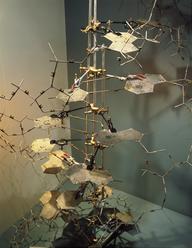

Three dimensional electron density map (glass) of tomato bushy stunt virus
- Made:
- Cambridge








Three dimensional electron density map (glass) of tomato bushy stunt virus, made at the Laboratory of Molecular Biology, Cambridge
Details
- Category:
- Biochemistry
- Object Number:
- 1988-27
- Materials:
- wood (unidentified), glass and plastic (unidentified)
- Measurements:
-
overall: 125 mm x 160 mm x 60 mm, 1.68 kg
- type:
- electron density map
- credit:
- Medical Research Council, Laboratory of Molecular Biology, Cambridge




